Aircraft composites are lightweight, high-strength materials made from two or more substances, combining their best properties for enhanced performance and durability in aviation applications.
1.1. Overview of Composite Materials in Aviation
Composite materials in aviation are engineered combinations of two or more distinct substances, offering exceptional strength-to-weight ratios, corrosion resistance, and durability. Common examples include carbon fiber-reinforced polymers (CFRP) and glass fiber-reinforced polymers (GFRP). These materials are widely used in aircraft structures, such as wings, fuselages, and control surfaces, due to their ability to reduce weight while maintaining or enhancing performance. Composites also provide design flexibility, enabling complex shapes that cannot be achieved with traditional metals. Their adoption has grown significantly in modern aircraft, contributing to improved fuel efficiency and reduced maintenance needs over time.
- Lightweight and high-strength properties.
- Resistance to fatigue and corrosion.
- Excellent thermal and electrical insulation.
Composites are now integral to both military and civilian aircraft, playing a crucial role in advancing aviation technology and sustainability.
1.2. Importance of Composite Materials in Modern Aircraft
Composite materials are vital in modern aircraft due to their exceptional strength-to-weight ratio, enabling significant weight reduction while maintaining structural integrity. This leads to improved fuel efficiency, reduced operational costs, and enhanced performance. Composites also offer superior resistance to fatigue and corrosion compared to traditional metals, extending aircraft lifespan and lowering maintenance requirements. Their ability to be molded into complex shapes allows for aerodynamic optimizations, further boosting efficiency. Additionally, composites contribute to noise reduction and thermal insulation, improving passenger comfort. Their adoption is crucial for meeting modern aviation’s demand for sustainability and performance, making them indispensable in contemporary aircraft design.
- Enhanced fuel efficiency through weight reduction;
- Improved durability and resistance to environmental factors.
- Design flexibility for advanced aerodynamics.
Composites are a cornerstone of modern aerospace innovation, driving both economic and environmental benefits.
1.3. Brief History of Composite Use in Aerospace
The use of composite materials in aerospace dates back to the mid-20th century, with early applications in military aircraft during the 1940s. Initial composites, such as plywood, were rudimentary but demonstrated potential for lightweight, durable structures. The 1960s and 1970s saw advancements with boron and carbon fiber reinforced polymers, leading to their adoption in aircraft components like wings and fuselage parts. By the 1980s, composites became integral to military jets, and their use expanded to commercial aviation in the 2000s, with aircraft like the Boeing 787 and Airbus A350 showcasing extensive composite construction. This evolution highlights composites’ growing role in modern aerospace engineering.
- 1940s: Early use of plywood and fiberglass in aircraft.
- 1980s: Widespread adoption in military aircraft.
- 2000s: Extensive use in commercial aviation.
Composites have revolutionized aircraft design, enabling lighter, stronger, and more efficient structures.
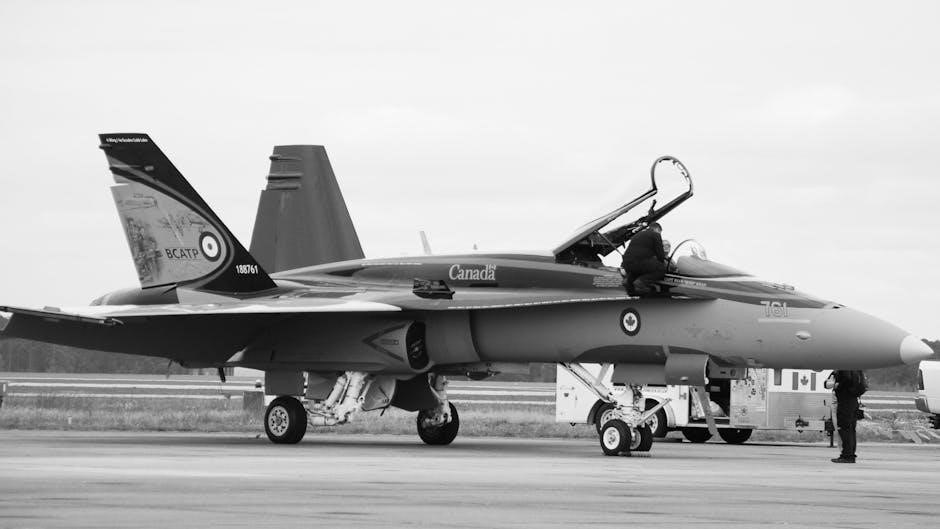
Design and Manufacturing Considerations
Aircraft composite design focuses on material selection, weight reduction, and structural integrity, while manufacturing involves precision techniques to ensure quality and durability for optimal performance.
- Material selection for strength-to-weight ratio.
- Manufacturing processes ensuring precision and quality.
2.1. Material Selection for Aircraft Composites
Material selection for aircraft composites involves balancing strength, weight, durability, and cost. Common systems include carbon fiber-reinforced polymers (CFRP), glass fiber-reinforced polymers (GFRP), and hybrid materials. Each offers unique properties, such as high strength-to-weight ratios, resistance to fatigue, and thermal stability. The choice depends on the component’s role, environmental conditions, and manufacturing feasibility. Advanced polymers like epoxy resins are widely used for their excellent adhesion and mechanical properties. Proper material selection ensures optimal performance, safety, and longevity of aircraft components, aligning with regulatory and operational demands.
- Carbon fiber-reinforced polymers (CFRP)
- Glass fiber-reinforced polymers (GFRP)
- Hybrid materials
2.2. Manufacturing Techniques for Composite Components
Manufacturing composite components involves advanced techniques to ensure structural integrity and precision. Common methods include hand layup, vacuum bagging, and automated fiber placement (AFP). Hand layup is labor-intensive but cost-effective for small batches, while AFP offers high-speed, precise layering for large-scale production. Vacuum bagging combines materials under controlled pressure, minimizing voids and improving laminate quality. Each technique requires strict quality control to meet aerospace standards, ensuring components are both durable and lightweight for optimal aircraft performance.
- Hand layup for small-scale production
- Vacuum bagging for reduced voids
- Automated fiber placement (AFP) for precision
2;3. Challenges in Composite Manufacturing
Composite manufacturing faces challenges such as high material costs, complex processing requirements, and sensitivity to temperature and humidity; Ensuring proper fiber-matrix adhesion is critical to prevent delamination. Additionally, the lack of standardized manufacturing protocols and skilled labor can lead to variability in product quality. Post-manufacturing inspection is also challenging due to the non-conductive nature of composites, complicating defect detection. Addressing these issues requires advanced technologies and stringent quality control measures to maintain reliability and performance in aerospace applications.
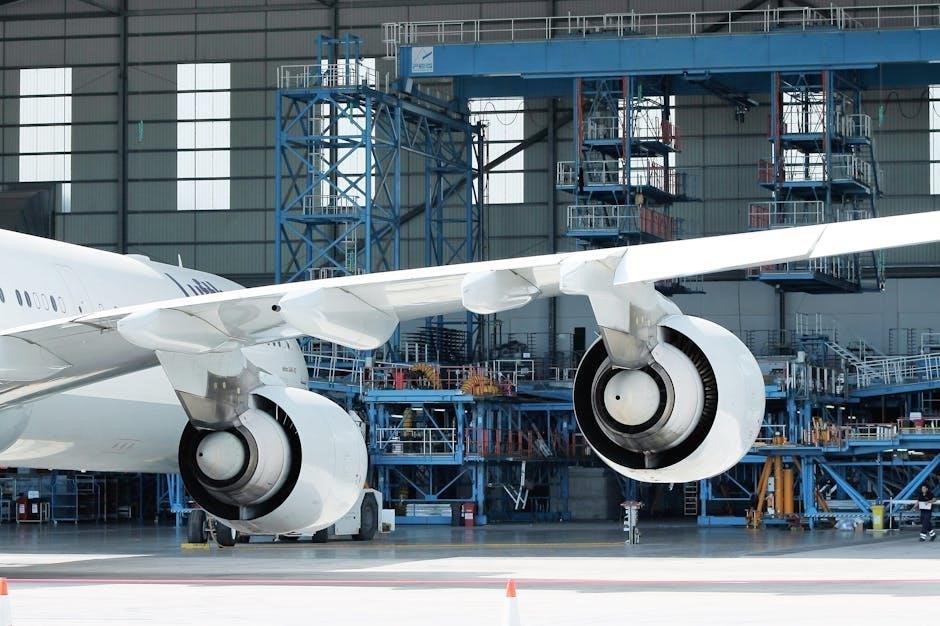
Inspection and Testing of Composite Structures
Composite structures require meticulous inspection and testing to ensure integrity, involving visual examination and advanced NDT methods to detect defects and ensure long-term durability and safety.
3.1. Visual Inspection Techniques
Visual inspection is the first step in assessing composite structures, identifying surface defects like cracks, delamination, or discoloration. Technicians use magnifying glasses, UV lights, and other tools to examine areas for damage. This non-invasive method is cost-effective and essential for initial evaluations. Common defects include surface cracks, erosion, or impact damage. Proper documentation of findings ensures thoroughness. Trained personnel are crucial for accuracy, as visual inspections require expertise. Regular inspections help maintain safety and prevent further damage. This process is vital for ensuring the integrity of composite components in aircraft.
3.2. Non-Destructive Testing (NDT) Methods
Non-Destructive Testing (NDT) methods are essential for evaluating composite structures without causing damage. Common techniques include ultrasonic testing, radiography, and thermography. Ultrasonic testing uses high-frequency sound waves to detect internal defects like delamination or cracks. Radiography employs X-rays to identify internal damage, while thermography measures temperature changes to spot irregularities. These methods are critical for ensuring the structural integrity of composites, especially in areas inaccessible for visual inspection. NDT provides detailed insights, helping technicians address issues before they escalate. Proper training and specialized equipment are required for accurate results, making NDT a vital tool in aircraft maintenance.
3.3. Interpretation of Inspection Results
Interpreting inspection results for aircraft composites requires expertise to ensure accurate assessments. Technicians analyze data from NDT methods like ultrasonic testing or thermography to identify defects. Results are classified based on severity, with critical issues requiring immediate attention. Standards and guidelines, such as those from the FAA or EASA, provide criteria for determining acceptable limits. Proper interpretation ensures structural integrity, preventing minor flaws from escalating into major failures. Training and experience are crucial for accurate analysis, enabling technicians to recommend appropriate repair actions and maintain safety standards. Clear documentation of findings is essential for future reference and compliance reporting.
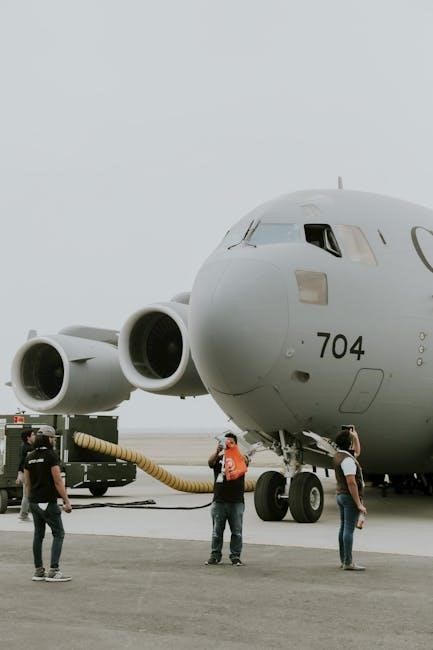
Damage Assessment and Repair
Aircraft composite damage assessment involves evaluating extent and type of damage, followed by precise repair techniques to restore structural integrity and safety, using specialized tools and standards.
4.1. Types of Damage in Composite Materials
Aircraft composite materials can sustain various types of damage, including delamination, cracks, impact damage, and fiber breakage. Environmental factors like moisture and temperature fluctuations may cause degradation. Mechanical stress from loading or impacts often leads to visible or subsurface damage. Delamination occurs when layers separate, weakening the structure. Impact damage, such as from foreign objects, can create invisible internal cracks. Manufacturing defects like porosity or improper curing also compromise material integrity. Identifying these damage types is critical for effective repair and maintaining aircraft safety and performance. Proper inspection techniques are essential to detect both visible and hidden damage accurately.
4.2. Step-by-Step Repair Procedures
The repair of composite materials involves a structured approach to ensure structural integrity and safety. First, assess the damage to determine its type and extent. Clean and prepare the damaged area by grinding or sanding to create a smooth surface. Apply a primer to enhance bonding, followed by a repair patch or material. Cure the repair using heat, pressure, or specialized tools. Finally, inspect the area using non-destructive testing methods to verify its strength and durability. Proper documentation and adherence to manufacturer guidelines are essential for a successful repair, ensuring the aircraft returns to safe operational conditions.
4.3. Specialized Tools and Equipment for Composite Repair
Composite repair requires specialized tools to ensure precise and effective maintenance. Key tools include precision cutting equipment for trimming composite materials, curing ovens or heat lamps for resin curing, and vacuum bagging systems to apply even pressure. Surface preparation tools like sanders and grinders are essential for creating proper bonding surfaces. Additionally, bonding equipment such as application rollers and brushes are used to apply adhesives correctly. Inspection tools, including ultrasonic testers and thermal imaging cameras, help detect internal defects post-repair. These tools are critical for maintaining the structural integrity and safety of composite components in aircraft.
Safety and Handling Precautions
Proper PPE, safe handling practices, and disposal of hazardous materials are essential for maintaining aircraft composites. Always follow guidelines to ensure safety and prevent damage.
5.1. Personal Protective Equipment (PPE) Requirements
When working with aircraft composites, proper PPE is crucial to ensure safety. This includes gloves to prevent skin irritation, safety glasses to protect eyes from debris, and respirators to avoid inhaling dust or fumes. Steel-toe boots and lab coats may also be required, depending on the task; Always ensure PPE is in good condition and stored properly. Training on PPE usage is essential to maintain a safe working environment. Adhering to PPE guidelines minimizes risks and ensures compliance with safety regulations during composite maintenance and repair operations.
5.2. Safe Handling of Composite Materials
Proper handling of composite materials is essential to prevent damage and ensure safety. Use dollies or lift assists for heavy components to avoid strain and drops. Always clean surfaces before handling to remove contaminants. Wear appropriate PPE and avoid touching composite surfaces with bare hands to prevent oil transfer. Use non-abrasive tools and materials to handle components to minimize scratches. Store composites in a dry, cool environment, away from direct sunlight and chemicals. Follow manufacturer guidelines for lifting and moving to prevent structural damage. Proper handling ensures material integrity and safety during maintenance operations.
5.3. Hazardous Material Disposal Guidelines
Proper disposal of hazardous materials from composite maintenance is critical to environmental and safety compliance. Adhere to local, state, and federal regulations for handling and disposal of chemicals, resins, and waste. Separate materials by type, such as organic solvents and synthetic fibers, to ensure proper processing. Use approved containers labeled clearly for hazardous waste. Store waste in designated areas with controlled access to prevent unauthorized disposal. Document all waste disposal activities for compliance records. Ensure personnel are trained in disposal procedures to minimize risks. Always follow environmental protection agency guidelines to avoid contamination and promote sustainability.
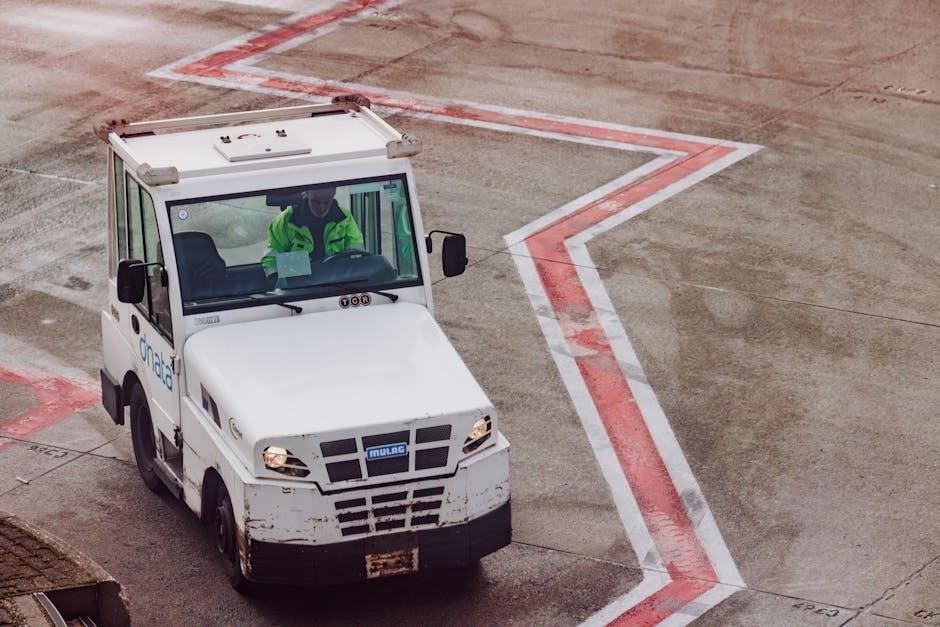
Regulatory Compliance and Standards
Adhering to FAA, EASA, and industry standards is critical for aircraft composite maintenance, ensuring safety, durability, and legal compliance in global aviation operations and repair practices.
6.1. FAA Regulations for Composite Maintenance
The Federal Aviation Administration (FAA) sets strict guidelines for composite aircraft maintenance to ensure safety and durability. These regulations outline specific protocols for inspecting, testing, and repairing composite structures. Adherence to FAA standards is mandatory for maintaining airworthiness certification. Key documents like Advisory Circulars (ACs), such as AC 20-107 and AC 120-27, provide detailed procedures for composite repair and inspection. Technicians must undergo FAA-approved training to handle advanced materials. Non-compliance can lead to safety risks and legal penalties. Regular audits and documented maintenance records are required to verify compliance. These regulations play a critical role in upholding aviation safety and industry standards globally.
6.2. EASA Guidelines for Composite Repair
The European Union Aviation Safety Agency (EASA) provides comprehensive guidelines for composite repair, ensuring compliance with stringent safety standards. These regulations are outlined in EASA Part 145 and Part M, which govern maintenance organizations and continuing airworthiness. Detailed repair procedures, technician training, and documentation requirements are emphasized to maintain safety and structural integrity. EASA mandates the use of approved data and materials for all composite repairs. Additionally, quality control processes must be implemented to verify repair accuracy. Adhering to these guidelines is critical to prevent safety risks and ensure compliance with EASA standards in European aviation operations.
6.3. Industry Standards for Composite Maintenance
Industry standards for composite maintenance are established by organizations like ASTM, SAE, and ISO to ensure uniformity and safety in repair practices. These standards provide detailed guidelines for material selection, testing, and repair techniques. For example, ASTM standards outline test methods for composite materials, while SAE offers specifications for composite repairs in aerospace. Compliance with these standards ensures that repairs meet global aviation requirements, maintaining aircraft airworthiness. By adhering to these guidelines, maintenance teams can ensure the structural integrity and safety of composite components, aligning with both regulatory and industry expectations for reliable performance.
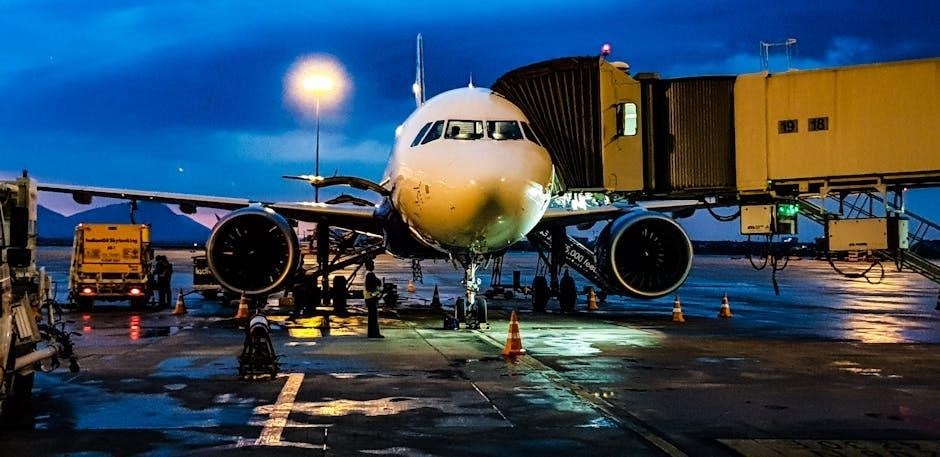
Case Studies and Real-World Examples
Case studies highlight real-world applications of composite maintenance, showcasing successful repairs and material performance in aircraft composites, providing practical insights for technicians and engineers.
7.1. Successful Composite Repair Scenarios
Successful composite repair scenarios demonstrate the effectiveness of modern maintenance techniques in restoring aircraft components to optimal condition. One notable example involves repairing a crack in a composite panel using hand layup and vacuum bagging methods, resulting in a structurally sound and aerodynamically smooth surface. Another case highlights the repair of delamination in a wing fairing through precision grinding and epoxy resin application. These scenarios underscore the importance of adhering to FAA and EASA guidelines, utilizing specialized tools like curing ovens, and employing skilled technicians. Proper documentation and pre-flight testing ensure compliance and safety, showcasing the aviation industry’s commitment to reliability and innovation.
7.2. Lessons Learned from Maintenance Challenges
Maintenance challenges in aircraft composites have revealed critical lessons, emphasizing the importance of precise inspection and repair techniques. Delamination and bonding issues often arise from improper surface preparation or curing temperatures, highlighting the need for strict adherence to manufacturer guidelines. Environmental factors, such as humidity and temperature fluctuations, can exacerbate damage, necessitating accelerated inspection schedules. Additionally, the use of incorrect resins or adhesives has led to structural weaknesses, underscoring the importance of material compatibility. These experiences stress the value of technician training, real-time monitoring, and robust documentation to ensure long-term airworthiness and safety in composite aircraft maintenance.
7.3. Industry Best Practices in Composite Maintenance
Industry best practices in composite maintenance emphasize adherence to standardized protocols, ensuring reliability and safety. Technicians must undergo specialized training to handle unique material properties. Documentation of all procedures is critical for traceability and compliance. Quality control measures, such as rigorous inspection and testing, are essential to detect defects early. Environmental controls during repair, like maintaining optimal temperature and humidity, prevent degradation. Collaboration between manufacturers, airlines, and regulatory bodies fosters continuous improvement. Leveraging advanced technologies, like non-destructive testing (NDT), enhances accuracy. Regular updates to maintenance manuals reflect the latest advancements, ensuring practices remain aligned with evolving material science and operational demands.
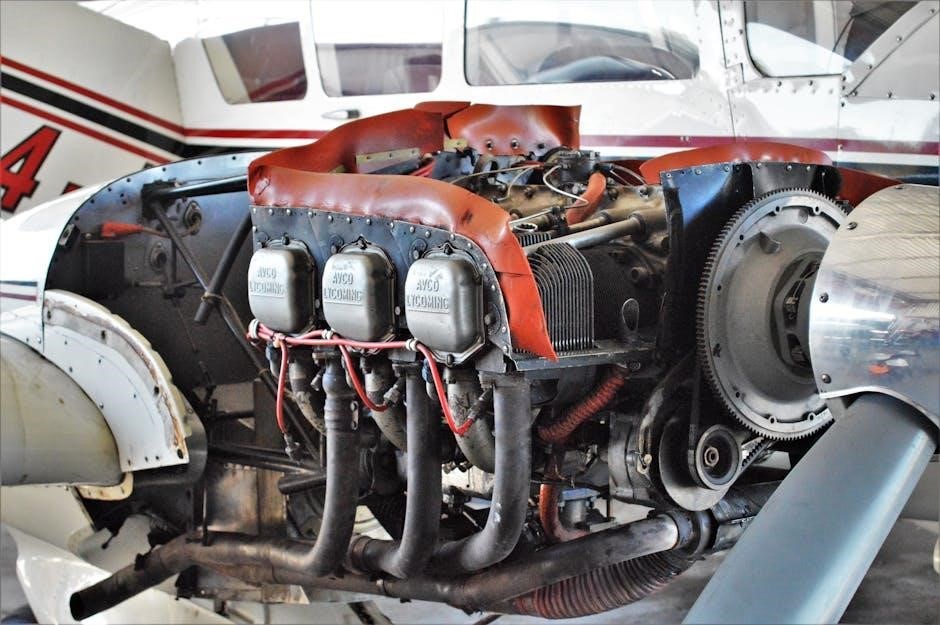
Emerging Trends in Composite Maintenance
Emerging trends include automation, advanced materials, and sustainability initiatives, enhancing efficiency, durability, and environmental friendliness in aircraft composite maintenance and repair processes.
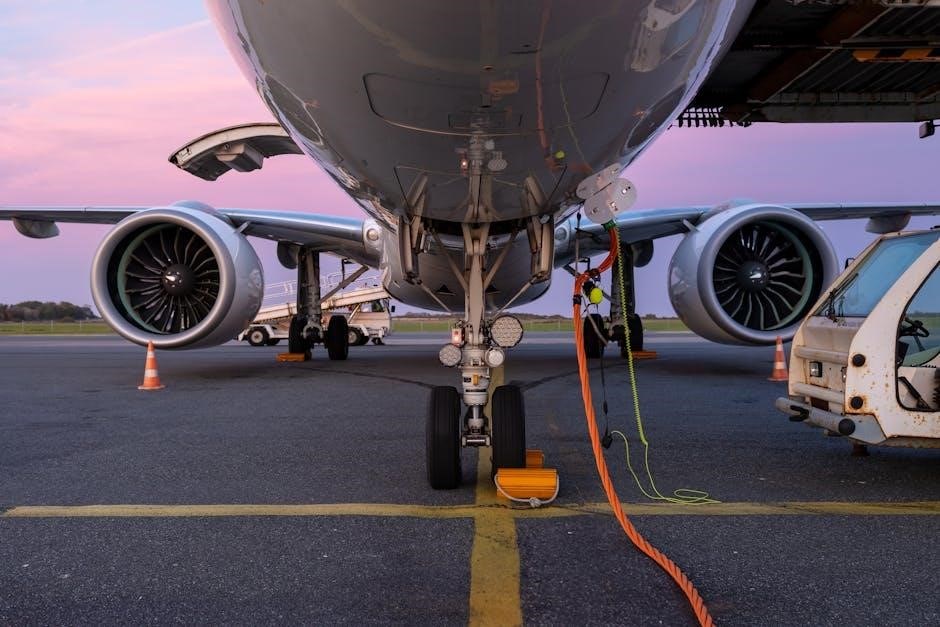
8.1. Advanced Composite Materials in Development
Research into advanced composite materials focuses on enhancing strength-to-weight ratios, durability, and environmental resistance. Cutting-edge materials like carbon fiber reinforced polymers (CFRP) and glass fiber reinforced polymers (GFRP) are being refined for improved performance. Self-healing composites, capable of autonomously repairing microcracks, are emerging as a breakthrough. Thermoplastic composites offer greater moldability and recyclability, reducing production costs. Hybrid materials combining different fibers and resins are also in development to tailor properties for specific applications. These innovations aim to address current limitations and expand the use of composites in future aircraft designs, ensuring sustainability and reduced maintenance needs.
8.2. Automation and Robotics in Composite Repair
Automation and robotics are revolutionizing composite repair by enhancing precision, reducing human error, and improving efficiency. Robotic systems equipped with advanced sensors and AI can perform intricate tasks like sanding, painting, and adhesive application with high accuracy. Automated repair cells minimize manual labor, ensuring consistent quality and reducing turnaround times. These technologies also enable real-time monitoring and defect detection, ensuring repairs meet stringent aviation standards. By integrating robotics, maintenance facilities can optimize workflows, enhance safety, and maintain the integrity of composite structures, ultimately lowering costs and extending aircraft service life.
8.3. Sustainability Initiatives in Composite Maintenance
Sustainability initiatives in composite maintenance focus on reducing environmental impact while maintaining performance. Strategies include recycling carbon fiber, using eco-friendly resins, and minimizing waste during repair. Innovations like plant-based composite materials and bio-resins are gaining traction, offering sustainable alternatives. Energy-efficient curing processes and reduced chemical usage further contribute to greener practices. These efforts not only lower environmental footprints but also align with industry goals for eco-friendly aviation solutions, ensuring a balance between performance, durability, and environmental responsibility in composite maintenance.
The aircraft composites maintenance manual provides essential insights into efficient, safe, and sustainable practices, ensuring optimal performance and longevity of composite materials in aviation applications.
9.1. Summary of Key Takeaways
The aircraft composites maintenance manual emphasizes the importance of understanding material properties, advanced manufacturing techniques, and non-destructive testing methods. It highlights the critical role of proper inspection, repair, and safety protocols to ensure structural integrity and longevity. Adherence to regulatory standards, such as FAA and EASA guidelines, is stressed for compliance and safety. The manual also explores emerging trends like automation and sustainable practices, offering a comprehensive guide for maintaining modern aircraft composites effectively.
9.2. Future Outlook for Aircraft Composite Maintenance
The future of aircraft composite maintenance lies in advancing automation, robotics, and sustainable practices. Innovations in materials like graphene and nanotubes promise enhanced durability and weight reduction. Robotics will streamline repair processes, improving efficiency and precision. Sustainable initiatives, such as recycling and eco-friendly resins, aim to reduce environmental impact. Integration of advanced NDT methods, like AI-powered inspections, will enhance accuracy and speed. Collaboration between regulators and manufacturers will ensure safety and compliance. These advancements will revolutionize the industry, making composite maintenance more efficient, cost-effective, and environmentally responsible.

References and Further Reading
Consult textbooks like “Aircraft Composites” and “Advanced Composite Materials” for in-depth knowledge. Refer to industry publications and online resources for updated maintenance practices and standards.
10.1. Recommended Textbooks and Manuals
For comprehensive understanding, refer to textbooks like Aircraft Composites by P. McCarthy and Advanced Composite Materials by J. E. Masters. These texts provide detailed insights into material properties, manufacturing techniques, and maintenance practices. Additionally, the Aircraft Maintenance Manual and Composite Repair Manual are essential resources, offering practical guidance on inspection, repair, and safety protocols. These manuals are widely recognized in the aviation industry and serve as invaluable references for professionals involved in aircraft composite maintenance.
10.2. Relevant Industry Publications
Key industry publications include the FAA Advisory Circulars, which provide detailed guidelines for composite maintenance. Additionally, journals like Composite Manufacturing and Aerospace Engineering offer insights into cutting-edge techniques and material advancements. Trade magazines such as Aircraft Maintenance Technology and Aviation Week regularly feature articles on best practices and emerging trends in composite repair. These resources are essential for staying updated on regulatory changes, innovative solutions, and real-world applications in aircraft composite maintenance.
10.3. Online Resources and Training Programs
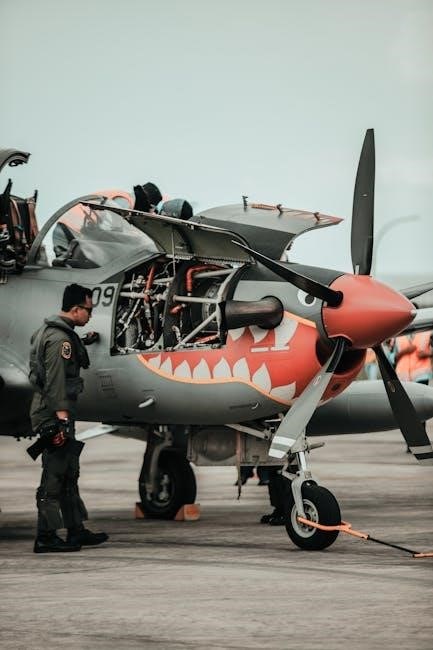
Several online resources and training programs are available for aircraft composites maintenance, offering in-depth knowledge and practical skills. The FAA provides online courses and manuals, while EASA offers e-learning modules on composite repair. Platforms like Udemy and Coursera feature specialized courses on aerospace composites. Additionally, industry-specific websites, such as Aircraft Maintenance Technology, provide webinars and tutorials. These resources include interactive modules, case studies, and hands-on exercises, ensuring technicians stay updated on the latest techniques and safety protocols. They also offer access to updated maintenance manuals and best practices in composite care.
